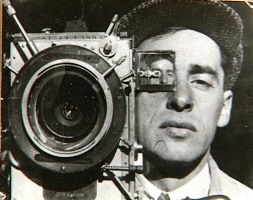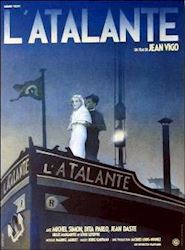
This course fills a requirement for the European Studies Minor (FL 3320). It will also count toward a major or minor in French, German or Spanish, so long as major assignments are focused on the language and written in the language (FRCH 3320, GRMN 3320 & SPAN 3320).
The Price of Admission = Our Readings - TBA :)
- Walter Benjamin, "Paris, Capital of the Nineteenth Century"
- William R. Everdell, "The Century Begins in Paris, Modernism on the Verge - 1900"
- (a) Guillaume Apollinaire, selections from Calligrammes, or
(b) Filippo Tomasso Marinetti, "The Founding and Manifesto of Futurism," or
(c) "Speed," chapt. 5 of Stephen Kern, The Culture of Time and Space I ,II, or related text -
Film screening, Jean Vigo, À Propos de Nice or Zero for Conduct (TBA)
-
resource hub: Paris: Capital of the 19th Century (Brown Univ. Library Center for Digital Scholarship)
Scheduled Walking Tours, Detours, and Short-Cuts
(1) Politics and Political Theories in 19th-century France/Paris - Walter Benjamin
- Liberty, unless enjoyed by all, is unreal and illusory... To secure liberty a Social Order is necessary which shall
- Discover and organize a system of industry;
- Guarantee to every individual the equivalent of their natural rights;
- Associate the interests of rich and poor. It is only on these conditions the masses can be secured a minimum of comfortable subsistence and enjoyment of all social pleasures.
- – Charles Fourier, from Theory of Social Organization, 1820
- Most of the images of Paris that belong to our repertory of cultural stereotypes - from impressionist painting to the main boulevards, to café life - "derive from Haussmann’s transformation of Paris. The intention of Napoleon III’s protégé was clear: a total rationalization, cleaning and opening of the city, was necessary for the circulation of the thousands of people pouring into Paris by rail every day, as well as to establish a well-organized civic center in the Île de la Cité.
- – Patrizia Lombardo, "Modern Metropolis...."
(2) Expositions Universelles, Technology, and Modern Consumerism
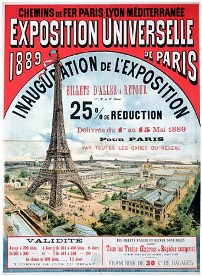
Exposition Universelle 1889
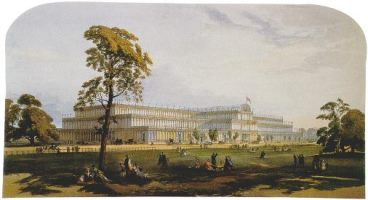
The Great Exhibition
at Crystal Palace, London, 1851
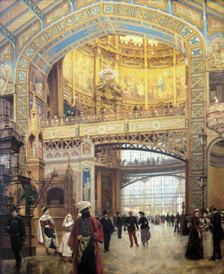
Gallerie des Machines,
Exposition Universelle 1889
- On entering the building for the first time, the eye is completely dazzled by the rich variety of hues which burst upon it on every side; and it is not until this partial bewilderment has subsided, that we are in a condition to appreciate as it deserves its real magnificance and the harmonious beauty of effect produced by the artistical arrangement of the glowing and varied hues which blaze along its grand and simple lines...
- Forming the centre of the entire building rises the gigantic fountain, the culminating point of view from every quarter of the building; whilst at the northern end the eye is relieved by the verdure of tropical plants and the lofty and overshadowing branches of forest trees... the objects which first attract the eye are the sculptures, which are ranged on every side; some of them of colossal size and of unrivalled beauty... We have here the Indian Court, Africa, Canada, the West Indies, the Cape of Good Hope, the Medieval Court, and the English Sculpture Court... Birmingham, the great British Furniture Court, Sheffield and its hardware,the woollen and mixed fabrics, shawls, flax, and linens, and printing and dyeing... general hardware, brass and iron-work of all kinds, locks, grates... agricultural machines and implements... the mineral products of England... the cotton fabric and carriage courts, leather, furs, and hair, minerals and machinery, cotton and woollen power-looms in motion... flax, silk, and lace, rope-making lathes, tools and minerals, marine engines, hydraulic presses, steam machinery, Jersey, Ceylon, and Malta with the Fine Arts Court behind them; Persia, Greece, Egypt, and Turkey, Spain, Portugal, Madeira and Italy, France, its tapestry, machinery, arms and instruments, occupying two large courts; Belgium, her furniture, carpets and machinery; Austria, with her gorgeous furniture courts and machinery furniture, North of Germany and Hase Towns; Russia, with its malachite doors, vases and ornaments, and the United States, with its agricultural implements, raw materials etc.
- – Catalogue of the Exhibition (Art Journal), 1851
- To him, the dynamo itself was but an ingenious channel for conveying somewhere the heat latent in a few tons of poor coal hidden in a dirty engine-house carefully kept out of sight; but to Adams the dynamo became a symbol of infinity. As he grew accustomed to the great gallery of machines he began to feel the forty-foot dynamos as a moral force, much as the early Christians Cross. The planet seemed less impressive, in its old-fashioned, deliberate, annual or daily revolution, than this huge wheel, revolving within arm’s-length at some vertiginousspeed, and barely murmuring... while it would not wake the baby lying close against its frame. Before the end, one began to pray to it; inherited instinct taught the natural expression of man before silent and infinite force.
- – Henry Adams, "The Dynamo and the Virgin" (Great Exposition in Paris, 1900)
(3) Case # 1: Charles Baudelaire, Of Flâneurs, Dandies, and the Bourgeoisie
-
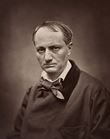
When the urban spectacle dazes more than it dazzles, the flâneur comes to resemble an exiled figure who has not chosen to ramble about the city but is compelled to do so. Originally a stroller able to quit the city and return home, he becomes over the course of the 19th-century a drifter without a home. Once a celebrant of urban enchantments, the flâneur at mid-century exposes not only the uncertainty and anomie that attend life in the modern city but also and more especially a failure that threatens the creative enterprise. - – Priscilla Parkhurst Ferguson, "The Flâneur...."
- For the perfect flâneur, for the passionate spectator, it is an immense joy to set up house in the heart of the multitude, amid the ebb and flow of movement, in the midst of the fugitive and the infinite.... the lover of universal life enters into the crowd as though it were an immense reservoir of electrical energy.... He is an 'I' with an insatiable appetite for the 'non-I'
- – Charles Baudelaire, "The Painter of Modern Life"
- I am convinced that the ill-applied developments of photography, like all other purely material developments of progress, have contributed much to the impoverishment of the French artistic genius.... [L]et it be the secretary and clerk of whoever needs an absolute factual exactitude.... But if it be allowed to encroach upon the domain of the impalpable and the imaginary, upon anything whose value depends solely upon the addition of something of a man's soul, then it will be so much the worse for us!
- – Charles Baudelaire, "The Salon of 1859"
(4) Futurism(s) avant and après la lettre (Everdell)
-
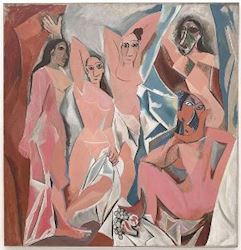
In the early months of 1907, a twenty-five-year-old Picasso set out to remake the history of art. In Paco Durrio’s old upstairs studio in the Bateau-Lavoir, he drew and painted studies of women far into the night. A candle flickered. By the wall stood his new blank canvas, eight feet high, sized and lined for a succPs de scandale and a frontal assault on immortality. Everything in art would go into it; and (such was the hope of the most ambitious painter in Paris) all subsequent art would grow out of it. It would be called Les Demoiselles d’Avignon (Avignon young ladies), and the first people to see it would call him mad. - - W. B. Everdell, The First Moderns
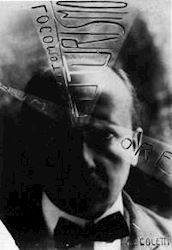
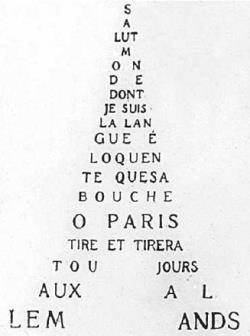 You are weary at last of this ancient world
You are weary at last of this ancient world